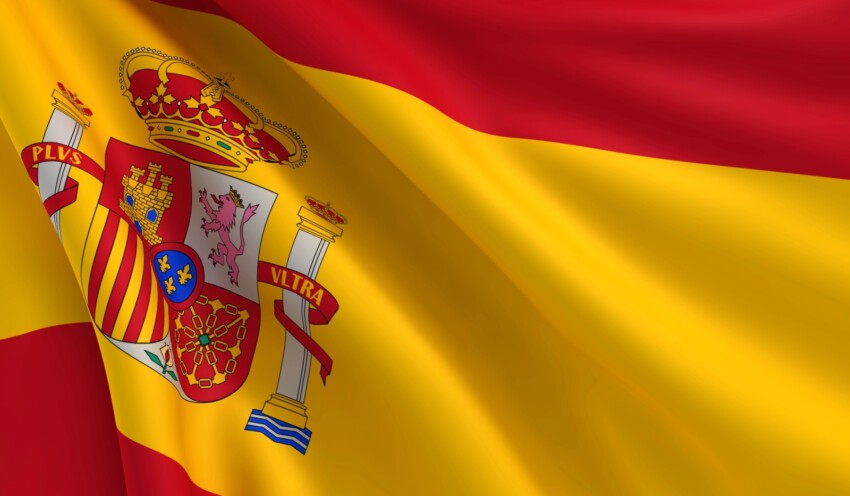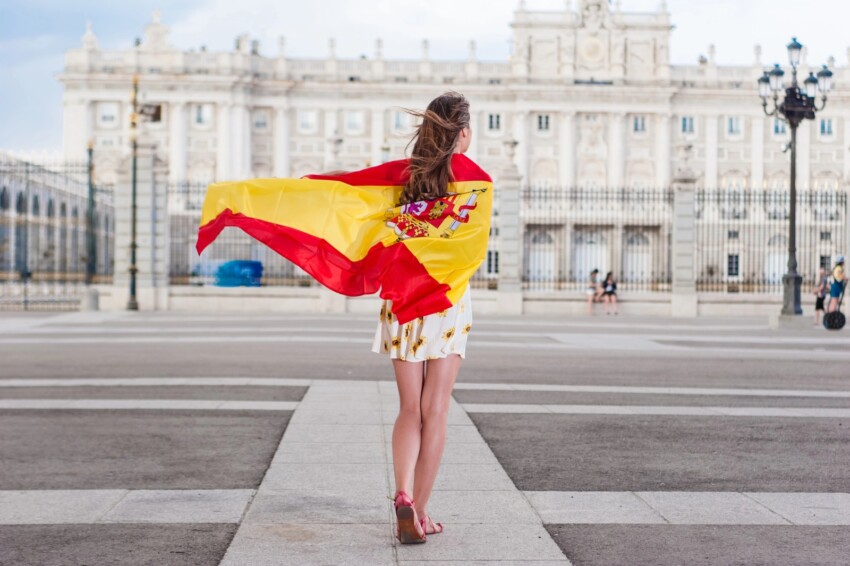

The Spanish flag, emblem of a nation rich in history, has a fascinating genesis dating back to the 18th century. It was the far-sighted King Charles III who gave life to this national symbol in 1785, carefully choosing the colours for the navy. His decision was guided by the practical need to have a flag that was easily distinguishable during naval battles. The colours chosen, red and yellow, were not accidental: they already represented the insignia of the powerful kingdoms of Castile and Aragon, symbolising the unification of the peninsular forces under one crown.
Today, the Spanish flag can be found in all public buildings and is displayed during national celebrations. It can be seen flying majestically over the Royal Palace in Madrid, the Congress of Deputies and in all government institutions.
For tourists visiting Spain, one of the most impressive places to see the national flag is the Plaza de Colón in Madrid, where one of the largest flags in the country flies. Standing 50 metres high and measuring 294 square metres, this imposing version of the Rojigualda has become an iconic landmark in the capital.
The flag takes centre stage during the Fiesta Nacional de España (12 October), when the streets are filled with decorations in the national colours. During this festivity, a solemn flag-raising ceremony takes place in Madrid in the presence of the royal family.
Although its current form was established in 1981 with the Democratic Constitution, the flag continues to evolve in its social and cultural significance, representing not only national unity but also the openness of modern Spain towards the future.

The two outer red bands, known as the ‘rojo carmesí‘, encapsulate a deep and touching meaning: they symbolise the blood shed for the homeland and the courage and determination of the Spanish people throughout the centuries. The central yellow band, called ‘gualda‘, not only represents physical gold, but also embodies the cultural, artistic and spiritual wealth of the nation. This combination gave rise to the popular nickname ‘Rojigualda‘, a term that has entered the hearts of Spaniards and common parlance.
At the centre of the flag is the national coat of arms, a masterpiece of heraldry that recounts centuries of Spanish history through meticulously detailed symbols:
The royal crown above the coat of arms is not just an ornament: it represents the continuity of the Spanish constitutional monarchy. The Pillars of Hercules at the sides of the coat of arms are a powerful geographical and mythological symbol, representing the Strait of Gibraltar. The red ribbon that wraps around them bears the motto ‘Plus Ultra‘ (Beyond).
The protocol of use of the Spanish flag is regulated by precise legislative rules established by Law 39/1981. These rules are designed to guarantee the utmost respect for the national symbol and ensure a correct representation of the Spanish identity.
The flag requires a position of honour, always occupying the most visible place in the building. During the established display hours, it is hoisted at dawn and lowered at dusk in public buildings. If there is adequate lighting, it may remain displayed 24 hours a day. It is essential to protect the flag from adverse weather conditions that could damage it. To maintain the physical integrity of the symbol, it must never touch the ground or water.
During national mourning, the flag is displayed at half-mast in all public buildings. Black ribbons may be added to the top of the pole. The period of mourning is officially determined by the government.
During official ceremonies and state events, the flag-raising is accompanied by the national anthem. Military personnel must give the regulation salute, while civilians are required to maintain a respectful attitude.